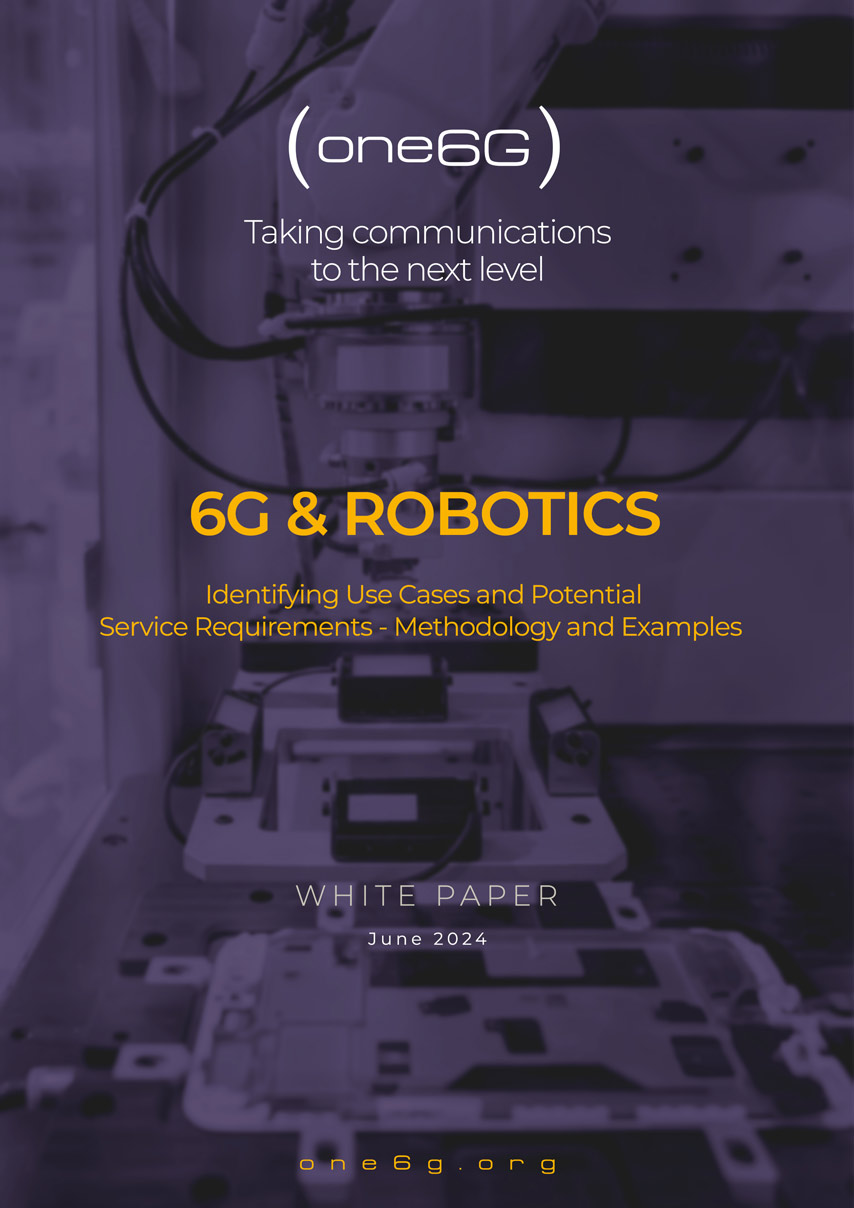The third one6G White Paper on 6G Robotics released
 one6G Association’s Working Group 1 released a new White Paper on 6G Robotics, titled “Identifying Use Cases and Potential Service Requirements – Methodology and Examples.” The White Paper extends the investigations from the previous two White Papers covering 6G Robotics, “6G & Robotics: Use Cases and Potential Service Requirements” and “6G and Robotics: A Methodology to Identify Potential Service Requirements for 6G-Empowered Robotic Use Cases.”
one6G Association’s Working Group 1 released a new White Paper on 6G Robotics, titled “Identifying Use Cases and Potential Service Requirements – Methodology and Examples.” The White Paper extends the investigations from the previous two White Papers covering 6G Robotics, “6G & Robotics: Use Cases and Potential Service Requirements” and “6G and Robotics: A Methodology to Identify Potential Service Requirements for 6G-Empowered Robotic Use Cases.”
The scope
“Identifying Use Cases and Potential Service Requirements – Methodology and Examples” presents a series of use cases across two vertical scenarios in robotics: robot-to-robot cooperation and robotic operations in remote or damaged environments. For each use case, a number of functional or quantitative requirements were identified, which are needed to enable the use case, but are not yet supported by the current 3GPP network (5GS). From this analysis of robotics use cases, it became clear that there is great potential for the upcoming 6GS to offer meaningful functionality to improve the operation of robots in these two scenarios.
The recommendations derived from the analysis performed in “Identifying Use Cases and Potential Service Requirements – Methodology and Examples” are two-fold; Firstly, the presented use cases should continue to be refined with the aim of submitting UCs to SDOs, such as 3GPP SA1 or ETSI; Secondly, considering the breadth of expected usage of robotics in the industries of the future, it is important to consider additional use cases – both within the scenarios already discussed in the paper, as well additional scenarios within robotics, e.g., medical robotics, assistive and rehabilitative robots, service robots, robots for package delivery, and many more. The two scenarios explored in the White Paper were merely intended as the first step into further consideration of robotics use cases, which will be further expanded upon in future volumes of the one6G 6G & Robotics series of White Papers.
